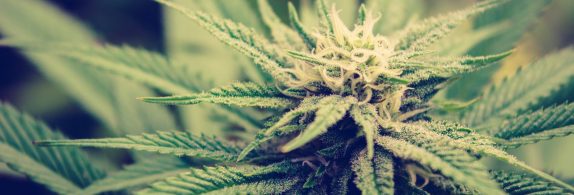12 FAQs about medicinal cannabis
There has been increasing interest in the use of cannabis for medical purposes, with Governments at both Commonwealth and State and Territory levels in Australia implementing a raft of legislative and policy change to allow the cultivation, manufacture, prescribing and dispensing of medicinal cannabis products for patients in Australia.
In this article, we tackle all the key questions around medicinal cannabis, how patients can access it, how clinicians can prescribe and dispense it and the wider legal issues impacting prescription, cultivation and supply.
1. What is medicinal cannabis?
According to the Therapeutic Goods Administration (TGA), cannabis is a genus of flowering plant in the family cannabaceae. It has a long history of medicinal use in several cultures contains a variety of compounds (cannabinoids) which are ligands (binding agents) for cannabinoid receptors in the body. In modern times, a variety of plant-derived and synthetic cannabinoids have been developed for medical use.
2. What medical conditions can it treat?
The TGA states there is available evidence for the use of medicinal cannabis in palliative care, chemotherapy-induced nausea and vomiting, chronic pain, multiple sclerosis and epilepsy.
3. Which patients are eligible to obtain medicinal cannabis?
Medicinal cannabis products will only be available for specific patient groups under medical supervision. According to the TGA, the Australian Government facilitates access to medicinal cannabis products to appropriate patients for medical conditions where there is evidence to support its use.
To achieve this, a number of legislative and regulatory changes have been implemented at the Commonwealth level through the Department of Health, comprising of the Therapeutic Goods Administration (TGA) and the Office of Drug Control (ODC).
Decisions on whether particular cannabis products may be appropriate for a particular patient are still made by the ‘treating prescriber’ and patient on a case-by-case basis. For more information, click here.
4. Who is authorised to prescribe medicinal cannabis?
A doctor must either apply to the TGA to become an Authorised Prescriber, or be prepared to make an application on behalf of their patient through the TGA’s ‘Special Access Scheme’
5. Why is it hard to obtain a prescription?
According to the University of Sydney Lambert Initiative for Cannabinoid Therapeutics, the current reality is that many doctors do not feel confident to go forward with applications under the Special Access or Authorised Prescriber schemes.
The Initiative states medical practitioners are in a difficult position for a number of reasons:
- They may not feel adequately informed enough about the safe use of medicinal cannabis. This is not something that is typically taught at medical school or in continuing medical education programs.
- They may not have easy access to the detailed information required for the TGA and State/Territory applications – including the detailed justification and associated clinical evidence for why and how cannabis preparations might treat this illness.
- They may not feel capable of adequately monitoring the patient after they commence the treatment.
- They may not be insured against adverse outcomes that occur with patients prescribed medicinal cannabis.
6. Why aren’t more eligible patients using it?
On top of the difficulty to find a doctor capable of supporting a patient’s desire to use medicinal cannabis, the University of Sydney Lambert Initiative for Cannabinoid Therapeutics states that even if a doctor can be found who is prepared to assist a patient in gaining access, the reality is that many products are very expensive and are not subsidised by Australia’s Pharmaceutical Benefit Scheme.
This means medicinal cannabis products are often out of reach of patients with chronic illnesses, many of whom are unable to work and may be on disability pensions. As a result of this, the number of patients currently receiving medicinal cannabis products under these schemes (approximately 150 as of June 2017) is quite small relative to the numbers thought to be using illicit medicinal cannabis products in Australia.
7. What is the legal framework around it?
According to the Office of Drug Control, Legislation to enable the cultivation of cannabis for medicinal and related research purposes in Australia was passed by Parliament on 29 February 2016. The amendments relating to licensing came into effect on 30 October 2016.
A detailed regulatory framework has been put in place to enable applications for licences and permits for the cultivation, production and manufacture of medicinal cannabis products.
Medicinal cannabis became a controlled drug in the Poisons Standard on 1 November 2016. As a result of this change, the TGA explains that medicinal cannabis can be prescribed under the provisions of a controlled drug (Schedule 8) of the Poisons Standard.
Cannabis grown for medicinal purposes, as well as the resulting product, is subject to stringent security and quality control measures. There are currently three types of licences relating to the supply of medicinal cannabis products available relating to cultivation, research and manufacturing.
8. Where in Australia is it legal?
Whether medicinal cannabis can be prescribed in a particular jurisdiction depends on whether the state or territory has adopted the change.
Victoria was the first state in Australia to introduce legislation to legalise medicinal cannabis, but other states and territories have quickly followed.
You can check the website of your state or territory health department to find out whether medicinal cannabis products are allowed in your state or territory.
- ACT Health
- NSW Government Health
- Northern Territory Department of Health
- Queensland Health
- SA Health
- Tasmanian Department of Health and Human services
- Department of Health and Human Services Victoria
- Government of Western Australia Department of Health
9. Who is cutting the red tape?
In March this year, The NSW Department of Health announced it was the first state to simplify medicinal cannabis access and instead of both the Commonwealth and NSW Health overseeing the approvals, NSW will rely on a single clinical assessment by the Therapeutic Goods Administration (TGA).
Federal Health Minister Greg Hunt said the streamlined application process meant that doctors wanting to prescribe unregistered cannabis medicines would typically get approval within 36 hours.
“This approach by NSW to cut red tape and remove barriers is a template for other States to follow,” Hunt said.
10. How is it cultivated?
On the 30 October 2016, legislation came into effect to allow legal cultivation, production and manufacturing of medicinal cannabis products in Australia. According to the TGA, the legislative changes forecasted an increase availability of medicinal cannabis products available to suitable patients.
The ODC administers this scheme and works in collaboration with therapeutic goods legislation and state and territory legislation. The ODC is responsible for the regulation of domestic cultivation and harvest, as well as other aspects of manufacture of medicinal cannabis, under the Narcotics Drug Act 1967.
11. How is it dispensed?
According to the TGA, medicinal cannabis products are regulated as medicines in Australia and are therefore subject to legal requirements. Generally, medicines imported into, supplied in, and exported from Australia must be entered in the Australian Register of Therapeutic Goods (ARTG), which is administered by the TGA.
Medicinal cannabis products not on the ARTG can be supplied through alternative pathways until more clinical evidence is gathered through clinical trials to support its registration. These alternative pathways make reference to Special Access Scheme (SAS) and Authorised Prescriber (AP).
12. Why is it so heavily regulated?
Cannabis remains a highly regulated drug in Australia and the use and supply of cannabis for non-medicinal purposes (for example, recreational use) is illegal in Australia, in accordance with applicable Commonwealth, state and territory laws.
The TGA states that medicinal cannabis is a controlled substance that is regulated to prevent diversion and illicit use. For this reason, demand and supply are linked in the regulatory process. For permits to be issued to Australian manufacturers, there needs to be communication between health professionals obtaining access for patients and medicinal cannabis manufacturers.
Watch this space for our next feature on this topic, where we discover what pharmacists should know when it comes to prescribing and dispensing medicinal cannabis in Australia









